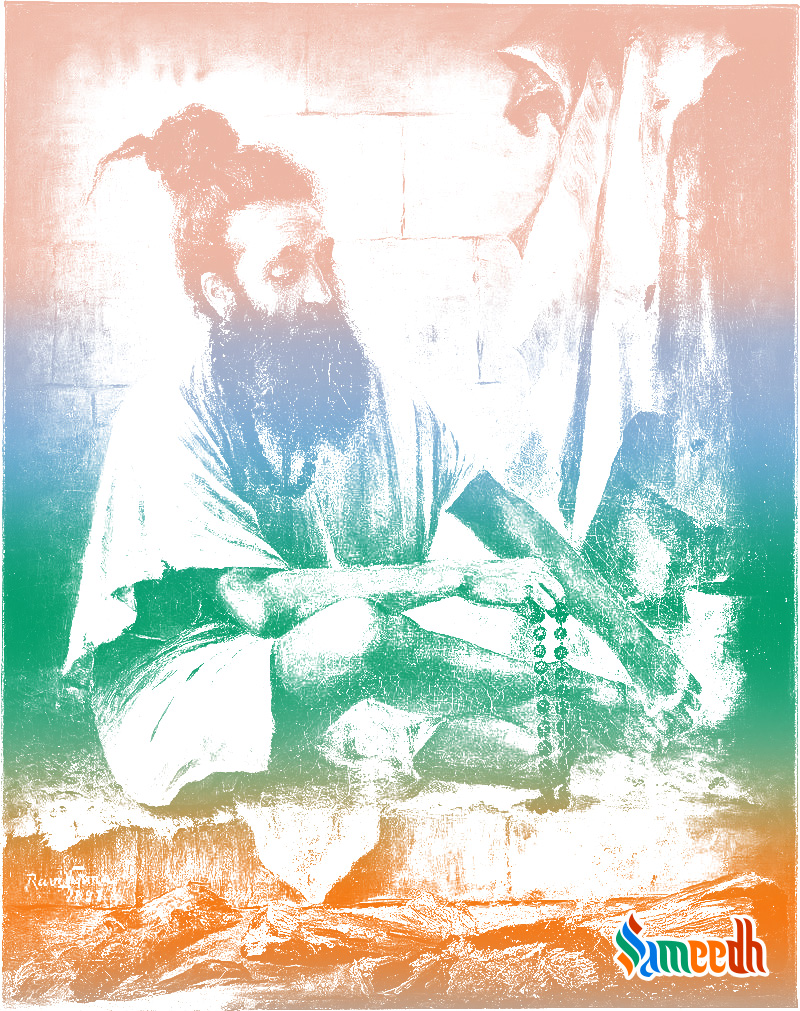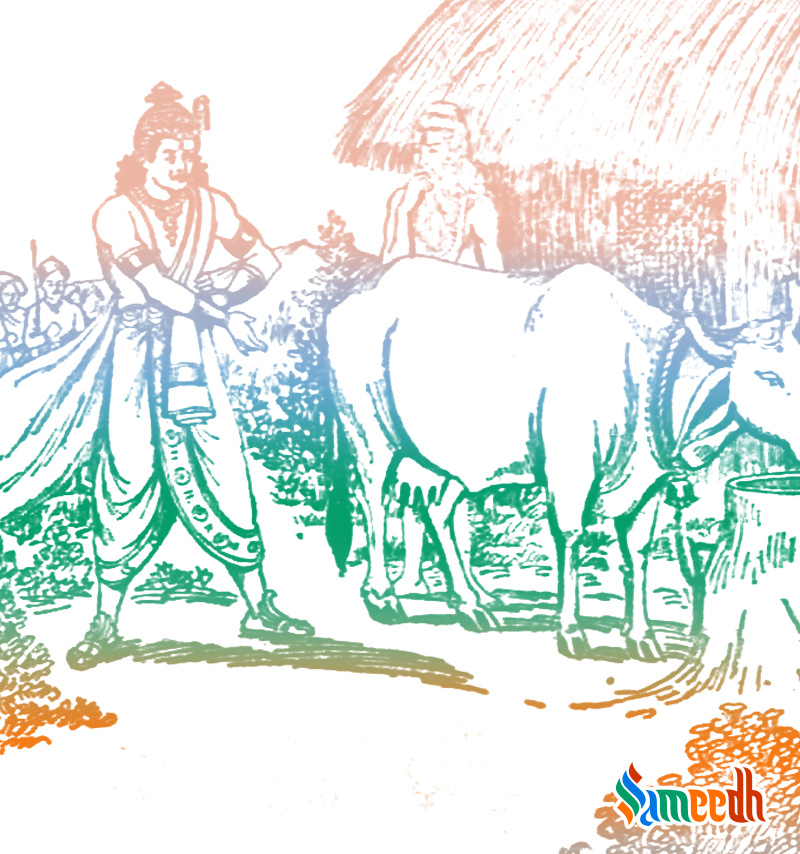Vishwamitra is one of the Saptarishi who achieved the title of Brahmarishi from Bhagwan Brahma, with his extreme knowledge and penance of thousands of years.
‘Sapta’ means seven, and ‘Rishi’ means a sage or seer in Sanskrit hence, Saptarishi literally means ‘seven seers’. Saptarishi are the Brahmarishi or scholars who wrote the scientific Indian scriptures such as Ved, Puran, and Upanishad. They created and updated them from time to time. The legends say, Brahma created a series of scholars as ‘Manas Putra’ to impart wisdom and education to human beings.

Vishvamitra, an ancient Hindu sage, in deep meditation; Image Source: Raja Ravi Varma
Rishi Vishwamitra
Rishi Vishwamitra is known as the author of the 3rd Mandal of Rugved. He is well-known as the mentor of the seventh avatar of Bhagwan Vishnu – Shri Ram and his brother Lakshman. He had a great influence on Ram, and that reflects in his commitment to discipline. He is also considered to be the author of Gayatri Mantra. People say that only a few people have been able to understand the hidden signals and intricate references of this mantra.
Vishwamitra was the son of Gaadhi Muni – a noted scholar and author of many hymns in Rugved. There are not many clear indications about his mother. He was the brother of Satyavati, who later on becomes the mother of Rishi Jamadagni.
There are numerous stories about the birth of these two sages. Parshuram – who was a Brahmin with the qualities of a Kshatriya. And Vishwamitra – who was a Kshatriya with the qualities of a Brahmin.
Rishi Vishwamitra was born as prince Kaushik, and he became the king of Kanyakubja, before he undertook severe yogic tapasya to be a Brahmarishi. Legends say that he stopped speaking, and almost did minimal breathing, and gave up eating during his Tapasya.
There is an interesting legend about Vishwamitra’s birth. Satyavati – the daughter of Gaadhi Muni, once desired virtuous sons for herself as well as her mother. She requested her husband Rishi Richik. He then gave her one pot for her mother, to whom a son with sensibilities of a Kshatriya would be born. And he gave her another pot with which a son with sensibilities of a Brahman would be born. Somehow those pots got mixed up, and Vishwamitra (with qualities of a brahmin) was born in a king’s house while Jamadagni (with qualities of a Kshatriya) was born in a Rishi’s house.
Vishwamitra Vs. Vasishtha
His bitter rivalry Rishi Vasishtha is well-known, and it is filled with numerous encounters for supremacy.
While he was a king, along with his army, he visited the ashram of sage Vasishtha, who welcomed him and hosted his entire army. Later on, when he knew about the Nandini cow, which is considered to be a Kamdhenu cow, producing everything that a person is in need of. He tried to take away Nandini, but when she sensed danger, she created an army bigger than King Kaushik’s army, which chased them away. This incident inspired him to become a bigger Brahmarishi than Rishi Vasishtha.
Later on, he is bestowed with the title of Rajarishi, but he refuses it and resumes his tapasya to become a Brahmarishi. Vishwamitra thus became one of the Saptarishi.
Legends also say that his great tapasya had frightened Indra and his council. So, they sent two apsara – Menka and Rambha, to distract him from his tapasya.

Viswamitra talking with Vasista; Image Source: Ramnarayandatt Shastri Pandey
The connection with Bharatvarsh
When Rishi Vishwamitra realizes that his tapasya has been lost because of his Sansar life with Menka, he decides to send her back to Indra. Their daughter Shakuntala then grows up in the ashram of Rishi Kanva. Here she falls in love with King Dushyant, and they both get married through Gandharva Vivah. Their child is called Bharat, from whose name the title Bharatvarsh or Bharat is believed to have come up.
